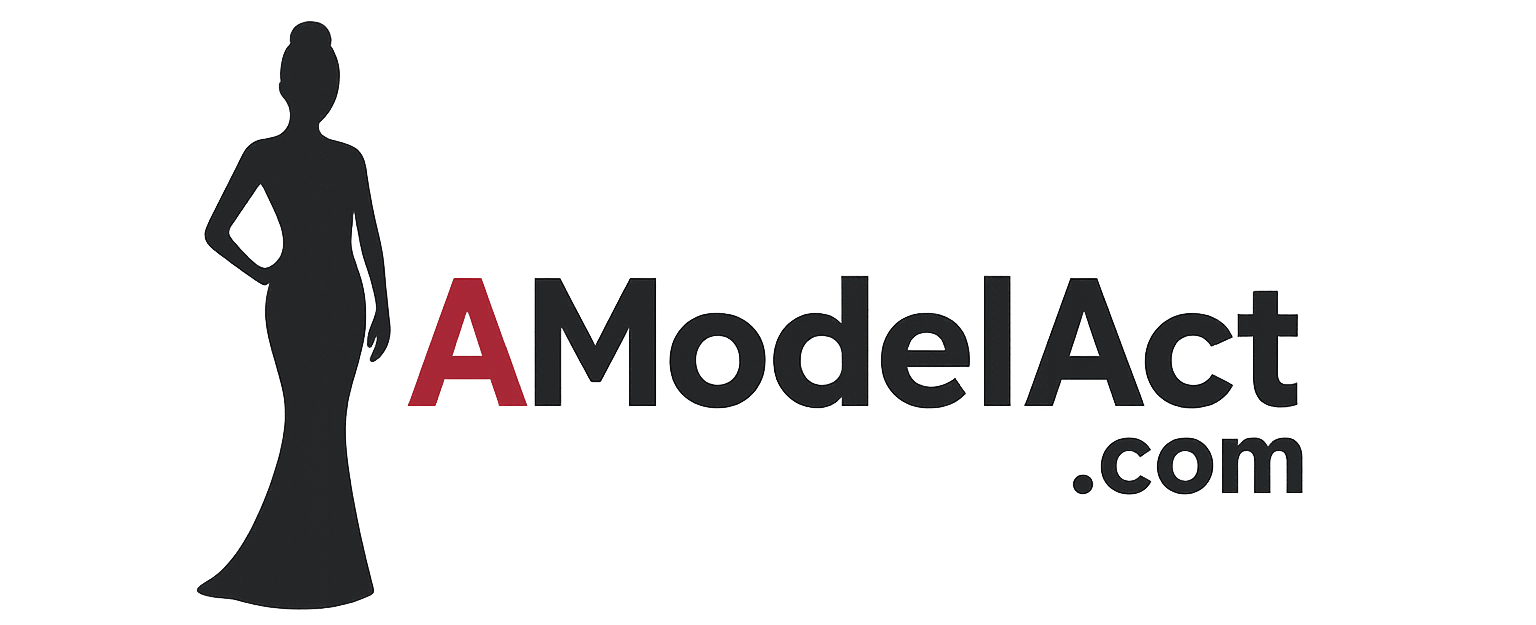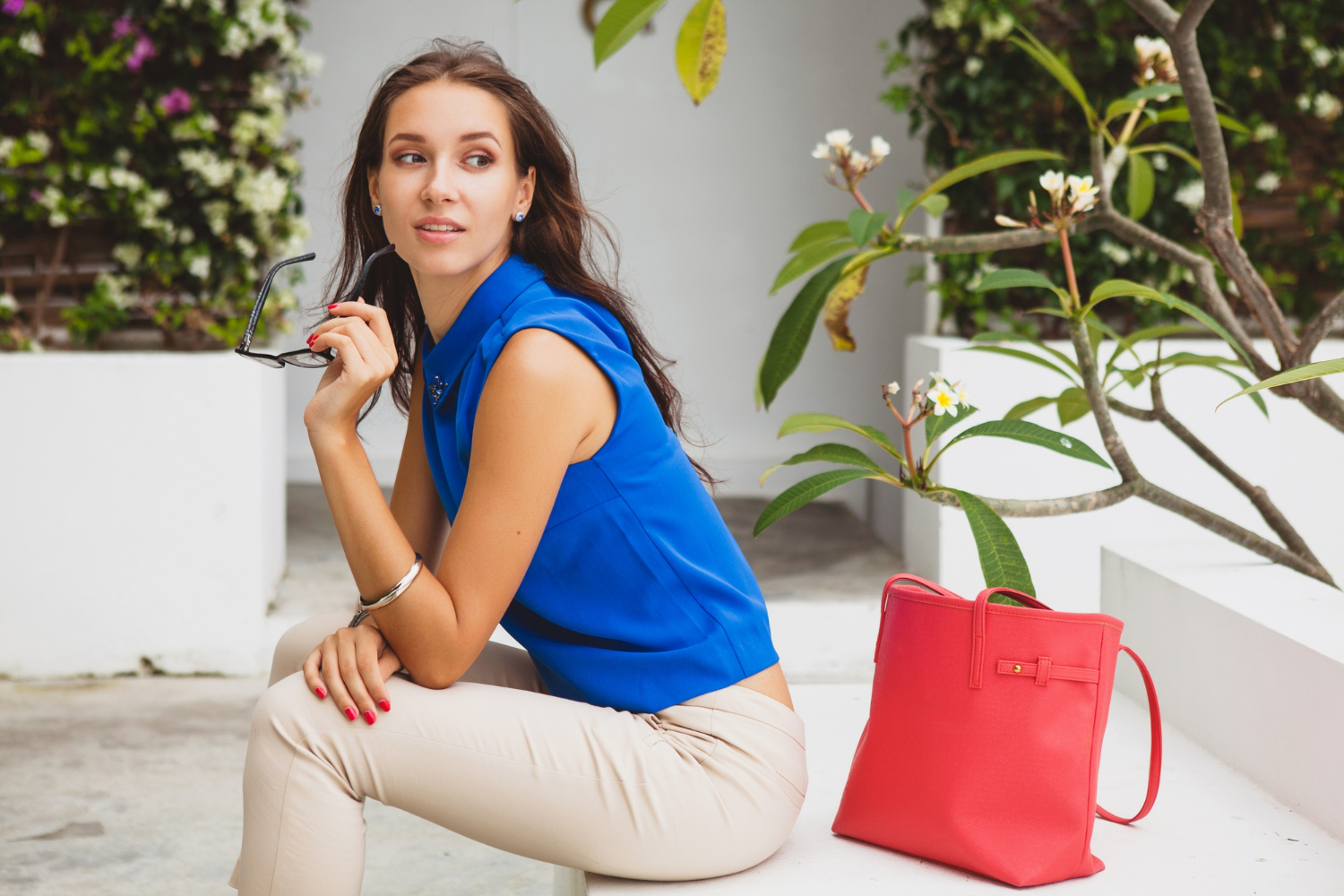Accessories are powerful tools in modeling. Whether I’m working with sunglasses, handbags, jewelry, scarves, or hats, I’ve found they can either elevate a shot or ruin it, depending on how I pose. Unlike clothing, accessories often become the focal point of the frame. The challenge is to highlight them without letting them overpower the rest of the image or make the pose look stiff. Through experience and trial-and-error on set, I’ve learned techniques that help me interact with accessories naturally, stylishly, and effectively.
These tips for posing with accessories have helped me bring intention and creativity to my work, and I always keep them in mind whether I’m on a fashion shoot, doing commercial work, or preparing for a test shoot with a new photographer.
Treat the Accessory Like a Character
Whenever I’m handed an accessory, I don’t just wear it, I treat it like part of the story. If I’m modeling a luxury handbag, I think about who the character is that would carry that bag. Is she elegant? Bold? Confident? Then I adjust my body language to fit that persona. This mindset helps me pose more authentically because I’m not just holding a product, I’m interacting with it.
For example, when modeling sunglasses, I don’t just place them on my face. I might lower them slightly with one hand and tilt my head to create intrigue. It’s about interaction, not display. Every accessory becomes an extension of my personality in the frame.
Let Your Hands Do the Talking
Hands can be tricky in modeling, especially when accessories are involved. But when used well, they can direct attention to the accessory and bring movement into the pose. I use my fingers to gently touch, adjust, or showcase the piece. If I’m wearing earrings, I might sweep my hair behind my ear or rest my fingertips gently on my jawline to draw attention to them. For rings, I often relax my hands near my face or collarbone, allowing the photographer to catch a natural angle.
The key is never to grip too hard or make a fist. Gentle tension in the hands creates elegance. I practice in the mirror with various accessories so I’m not fumbling on set. Developing hand awareness is one of the most underrated tips for posing with accessories.
Understand the Product’s Focal Point
Every accessory has a feature that needs to be emphasized. It could be the shape, color, branding, or craftsmanship. Before I pose, I ask the stylist or art director what they want the shot to emphasize. If I’m modeling a structured tote, I’ll hold it in a way that showcases its shape. If it’s a delicate pendant necklace, I’ll avoid having hair or clothing cover it.
I also make small adjustments with my shoulders or jawline to ensure light hits the product correctly. Understanding the product is just as important as understanding my own angles.
Use Angles to Create Interest
Straight-on poses rarely do justice to accessories. I’ve learned that tilting my body, shifting weight, and rotating my limbs can create more dimension in the shot. When holding a clutch, I might slightly twist my torso and let the bag rest against my thigh, or dangle it from my fingertips with one leg extended forward.
I play with asymmetry in poses so the accessory feels intentionally placed, not randomly added. Tilting a hat instead of wearing it squarely on my head adds drama. Slinging a bag over one shoulder and letting it fall diagonally across my torso adds visual flow. These small choices make the pose look more dynamic.
Facial Expressions Should Match the Vibe
Accessories often set the emotional tone of the photo. A bold statement necklace might demand a strong, fierce gaze. A wide-brimmed straw hat for a beachwear shoot could call for a soft, dreamy expression. I always try to sync my facial expressions with the feel of the accessory.
One of the most helpful tips for posing with accessories I’ve picked up is to let the item lead my energy. When I’m wearing oversized earrings and a dramatic eye look, I’ll deliver a more intense stare or tilt my chin slightly to create angles. When it’s a delicate bracelet, I soften my jaw and focus on elegance.
Mind the Proportions
If the accessory is large, I balance it with subtlety elsewhere. For example, if I’m modeling a large tote bag, I don’t crowd the image with strong arm poses or exaggerated leg placement. I let the bag do the talking while the rest of my body supports the frame.
On the other hand, small accessories like dainty rings or fine jewelry require closer, more intimate posing. I’ll pull the hand closer to my face or collarbone, working with tighter compositions. Keeping proportions in check ensures that nothing feels out of place in the final image.
Movement Adds Life
Stillness has its place in modeling, but movement often breathes life into accessory shots. I incorporate slow, intentional motion during shoots, like lifting a scarf, flipping my hair away from a necklace, or adjusting the straps of a handbag. This creates options for the photographer to catch the accessory mid-motion, which looks more editorial and less staged.
I’ve found that subtle movement, when done with control, allows the accessory to shine in different positions. It’s also more reflective of real-life use, which makes the shot feel more relatable and aspirational.
Practice With Mirrors and Video
Before important shoots, I spend time in front of a mirror or record short videos of myself posing with different accessories. This helps me see what angles look best and where my posture needs adjusting. I’ll try various ways to hold the product, dangling, cradling, clasping, until it looks natural.
This kind of practice makes me faster and more confident on set. One of the best tips for posing with accessories I can offer is to know your strengths and rehearse. Spontaneity is great, but preparation gives me the foundation to improvise effectively.
Pay Attention to Shadows and Lighting
Accessories are three-dimensional objects, and lighting can make or break how they appear. I make small adjustments during the shoot to ensure the light bounces off metal accents, clear lenses, or textured materials. If I’m wearing sunglasses, I angle my head so the lens reflects just enough light without obscuring my eyes.
With jewelry, I avoid poses that let shadows fall over the piece. I work with the photographer to make sure the sparkle or detail shows clearly. The more aware I am of light and shadows, the more consistently strong my accessory shots turn out.
Bring Personality Into the Pose
Accessories can be playful, bold, romantic, or cool, so I adjust my body language accordingly. If I’m holding a bejeweled clutch, I might pose with sophistication and glamour. If I’m modeling a sporty backpack, I might throw it over one shoulder with a carefree stance. Matching my attitude to the accessory gives authenticity to the image.
When I bring personality into the pose, the photo tells a story. Clients notice this, and it’s often the difference between a usable image and one that gets discarded. One of the most impactful tips for posing with accessories is to let your energy align with the emotion the item is meant to convey.
Be Comfortable, Not Rigid
Confidence sells. If I look uncomfortable holding an accessory, the camera picks it up immediately. I take a few seconds before each shot to settle into a natural position. I might sway slightly, shift my weight, or adjust my arm until it feels relaxed.
Stiff poses can make even the most beautiful accessory look awkward. That’s why I focus on posture and breathing while holding or wearing the item. Natural posing always looks better than forced elegance.
Details Matter
Every accessory shot needs attention to detail. I make sure no tags are showing, straps are straight, earrings are symmetrical, and nothing is twisted or out of place. Before the camera starts snapping, I check that everything is styled as intended. During the shoot, I glance at previews to catch anything that might need adjusting.
A beautifully posed photo can be ruined by a twisted necklace or a crooked belt buckle. These details fall under my responsibility as much as the stylist’s. Being meticulous gives me an edge in this competitive industry.
Confidence Makes the Shot
When all else fails, I remind myself to own the look. Confidence elevates every pose, every accessory, every moment on set. I’ve modeled with everything from oversized sunhats to quirky statement jewelry, and each time, my ability to sell the product came down to how I carried myself.
Accessories are meant to complement, not consume. They’re tools that highlight my personal style and storytelling ability. The more confident I feel while posing, the more convincing the final shot becomes.
Conclusion
Working with accessories is an art form that combines awareness, creativity, and intentionality. The best tips for posing with accessories always come back to this: interact, don’t just display. From hand positioning and movement to lighting and proportion, every detail matters. With enough practice and a confident mindset, accessories can become some of the most exciting parts of a photo shoot. They give models like me the chance to elevate a look, communicate a brand’s story, and bring an outfit to life, all in a single frame.

